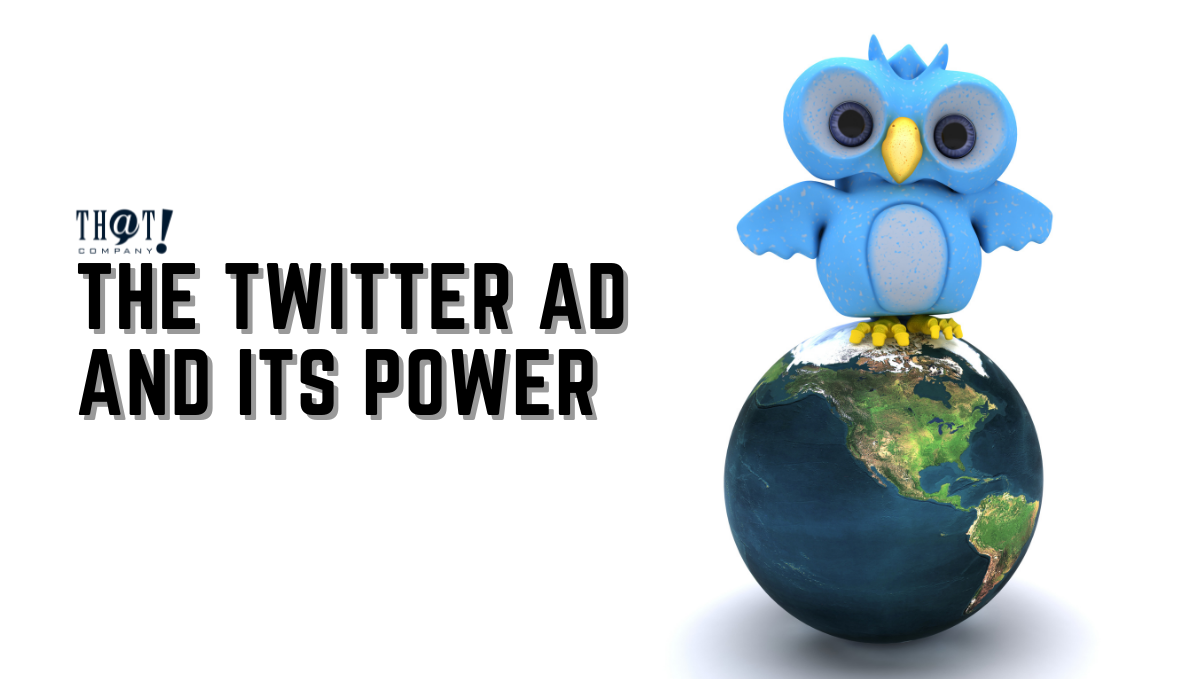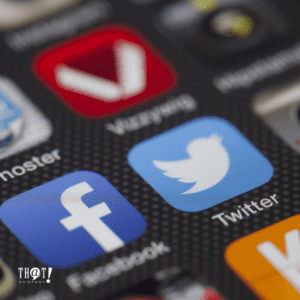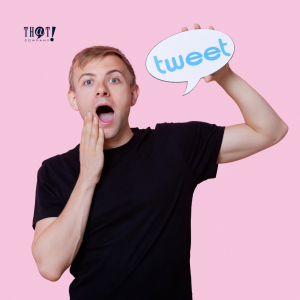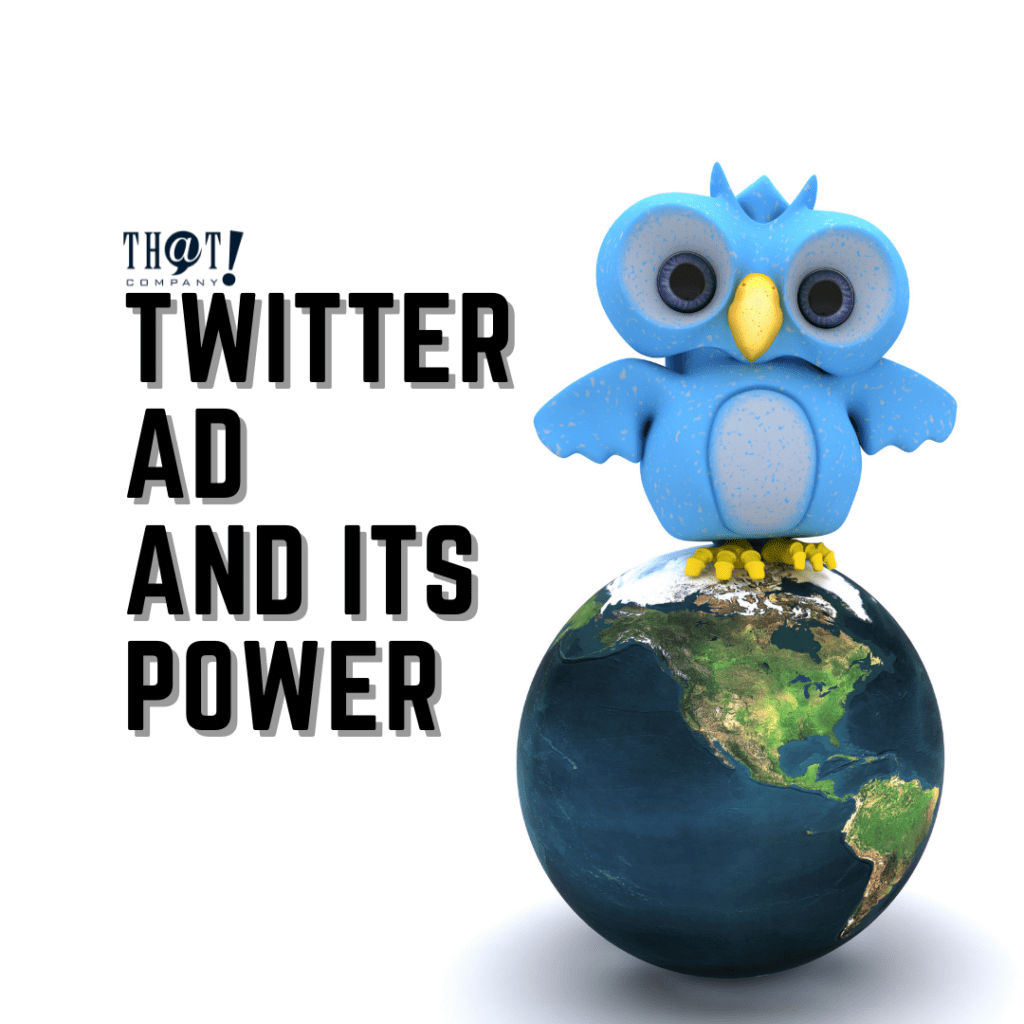
Enhance your Twitter marketing strategy with a powerful Twitter ad! Twitter ads are easy to use and can be equally cost-effective depending on how you decide to use them. There are ways you can put your dollars behind your Twitter account for advertising. Get ready to dive in and learn more about Twitter Ads and their power.
First off, we have to know what a Twitter Ad Campaign is. Tweets that have the word “promoted” affixed to them are ads. Elevate your Twitter strategy and results by running these paid ad campaigns. With Twitter Ads, brands and companies (big or small) can effortlessly choose campaign goals that enhance a marketing aim— it could be raising awareness, pushing consideration, or making audiences convert or take action. Twitter Ads give in their own power, makes it simple for you to pick the right budget, targeting, and creative selections. They have a Campaign Creator that seamlessly helps you throughout the process. It will let you build, launch and edit your campaigns with ease. What are these campaign ads if you may ask?
First is Promoted Tweets. Promoted Tweets are exactly what they sound like — advertising a single Tweet for different goals including acquiring followers, website traffic, and video views. This is the same as boosting a Facebook post. The second is a Promoted Twitter Account. Instead of just advertising one tweet, you have the choice to elevate your entire account by targeting audiences who don’t already follow you. These Tweets involve a catch-on CTA directly within them, therefore they are certainly perfect for boosting follower count. Promoted accounts also come up in “suggested people to follow”. And lastly, the most expensive among the three: Promoted Trend. Ignore that 24-hour news cycle, Twitter trends are basically a second-by-second news cycle, specifying what people are tweeting about in the highest volume at any given time. To help companies and brands get in on this huge exposure, Twitter does provide the ability to buy a spot on the trending topic list and it will be definitely tagged as “promoted”.
Twitter Ad vs Facebook Ad
A Twitter Ad has its own power. It provides some unique ad targeting features you won’t see anywhere else. It has its issues for sure but depending on what you want to accomplish for your brand, I believe it is one of the best platforms for advertising right now. Don’t get me wrong – I love Facebook Ads, Google Ads, and even Bing Ads. These advertising spaces all do a bunch of things amazingly and fantastically well too. However, a Twitter Ad has its own power. Here are some aspects where Twitter advertising is better than other online ad platforms mentioned.
 1. Get Charged for Your Performance
1. Get Charged for Your Performance
When a social media management company advertises tweets on Twitter, you will only get charged when you have reached your marketing goal. Whether your aim is completing a website conversion or just a single Twitter engagement, you will only spend when a user takes that action (any organic impressions and engagements are free addendum bonuses!). It is similar to everything with Twitter. You will only pay for the number of successful apps installs whenever you run an install app campaign and if you put out a follower campaign, you will only pay for the number of people who click the Follow button. This is actually my favorite feature of Twitter Ads. This is its real power.
How Much Does a Twitter Ad Cost, though?
Twitter ads are presented on a bidding system. Advertising campaigns on Twitter can be modified to fit your marketing budget and there is no minimum expend required.
there will be an auction and you bid on whatever available ad space and how much you want to spend for a “billable action” carried by your selected audience, on your Twitter ads. Of course, the more you bid, the more chance you have of being in the attention of your target.
Promoted Tweets are the lower-cost choice, they range from $0.50 to $3.00, while a promoted account can cost between $3.00 – $5.00. Promoting a trend is by far the most expensive option. It can cost about $300,000 per day.
On the other note, having a white label social media management is the smartest and most cost-effective way to drive sales. White label pricing can vary drastically depending on the size of the campaign and the amount of customization required.
[bctt tweet=”Twitter engagement works better. Tailored audiences and hashtag targeting? These are incredible features for creative marketers! Twitter Ads and its power, indeed!” username=”ThatCompanycom”]What are those “Billable Actions” on a Twitter Ad?
Just like every other digital ad campaign set-up, Twitter charges based on a certain number of different actions taken by the user. When setting up your campaign you can select which actions you’d like to bid on and for how much and you’ll only be charged when those actions are granted. Twitter divided these actions into 3 sections: Awareness, Consideration, and Conversion. Billable actions include the following:
Awareness:
– Reach – spending on impressions or number of people who see your ad on Tweets within a set period of time.
Consideration:
– Video views – auction on cost per view (CPV.
– Pre-roll views – an ad that appears before premium content.
– App installs – get charged when a user clicks a link to install your app.
– Website clicks – get charged for every website visit
– Engagements – boost engagement on your Tweets and get charged per engagement.
– Followers – spending on follower count.
Conversion:
– App re-engagements – get people to take action in your app.
2. Targeting the Keywords
 Targeting the keywords is the best accurate way to go after specific audiences who have shown intent on your Twitter content. You can target users who have used a specific word or customized hashtag in their Twitter statuses (and even users who have interacted with tweets containing those words and hashtags) in the last 10 years. This is why Twitter is superior to Facebook because Facebook doesn’t allow you to do this. Twitter’s Ads power is much more useful. On Facebook, you cannot target by keywords. Facebook only offers topic targeting. They do have hashtag targeting now but you will not find the people who interacted with it, only people who USED it. That is a big difference.
Targeting the keywords is the best accurate way to go after specific audiences who have shown intent on your Twitter content. You can target users who have used a specific word or customized hashtag in their Twitter statuses (and even users who have interacted with tweets containing those words and hashtags) in the last 10 years. This is why Twitter is superior to Facebook because Facebook doesn’t allow you to do this. Twitter’s Ads power is much more useful. On Facebook, you cannot target by keywords. Facebook only offers topic targeting. They do have hashtag targeting now but you will not find the people who interacted with it, only people who USED it. That is a big difference.
3. Targeting A Tweet Engager (s)
Targeting a Tweet Engager is another method to connect with an audience in a remarkably targeted way. With this form of marketing, you remarket to users who recently saw or engaged with your tweet. Twitter Ads and its power? Well, this is it, guys. This is the real hidden gem of Twitter. Rather than going for everyone on Twitter in a non-targeted tactic, you can target not only the user who saw your promoted tweet but also those who fully engaged with it. Facebook does not have any feature that is comparable to this. There is this Facebook’s “hidden” invite button that lets you invite people who engaged with your posts to like your page but that’s just it and it is in fact, an additional workload.
4. Tailored Audiences
Did you know that you can target every Twitter user who follows specific accounts with your Twitter ads? Facebook has this feature called custom audiences, which is awesome as well. However, Twitter wins because for Facebook custom audiences to work, you need to have the email address and/or contact number of the people you want to connect with. What if you don’t have either of those? Then, sorry, you’re out of luck! On Twitter, all you need is a user’s handle to reach people with your promoted tweets. Great use of Twitter Ads’ power.
What Does It All Mean?
 For advertisers, brands, and companies, Twitter having a smaller reach compared to Facebook is its greatest weakness, but it is also its greatest strength. Does your brand still need Facebook Ads and/or Google? Of course! These ad platforms are best for converting brand affinity into important leads and sales.
For advertisers, brands, and companies, Twitter having a smaller reach compared to Facebook is its greatest weakness, but it is also its greatest strength. Does your brand still need Facebook Ads and/or Google? Of course! These ad platforms are best for converting brand affinity into important leads and sales.
However, for some business fields, such as news, entertainment, technology, or even politics, Twitter engagement works better. Tailored audiences and hashtag targeting? These are incredible features for creative marketers! Twitter Ads and its power, indeed! The only catch is that you are only getting the people who are “Twitter Users”, which again as compared to Facebook users, it’s a smaller audience. But it does not mean you can’t wring out a great return for your investment. Again, everything depends on your objective.






























